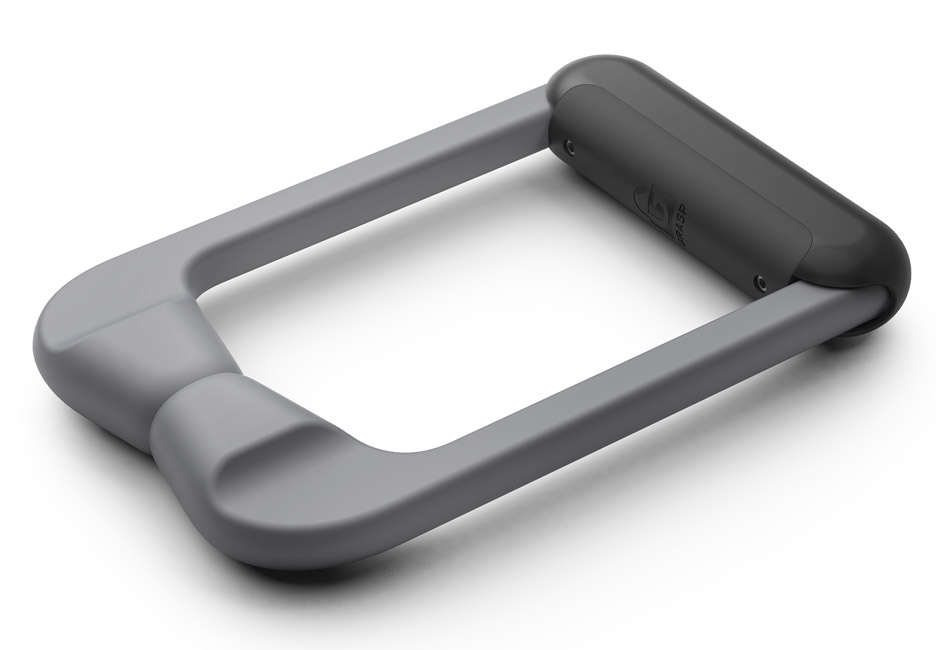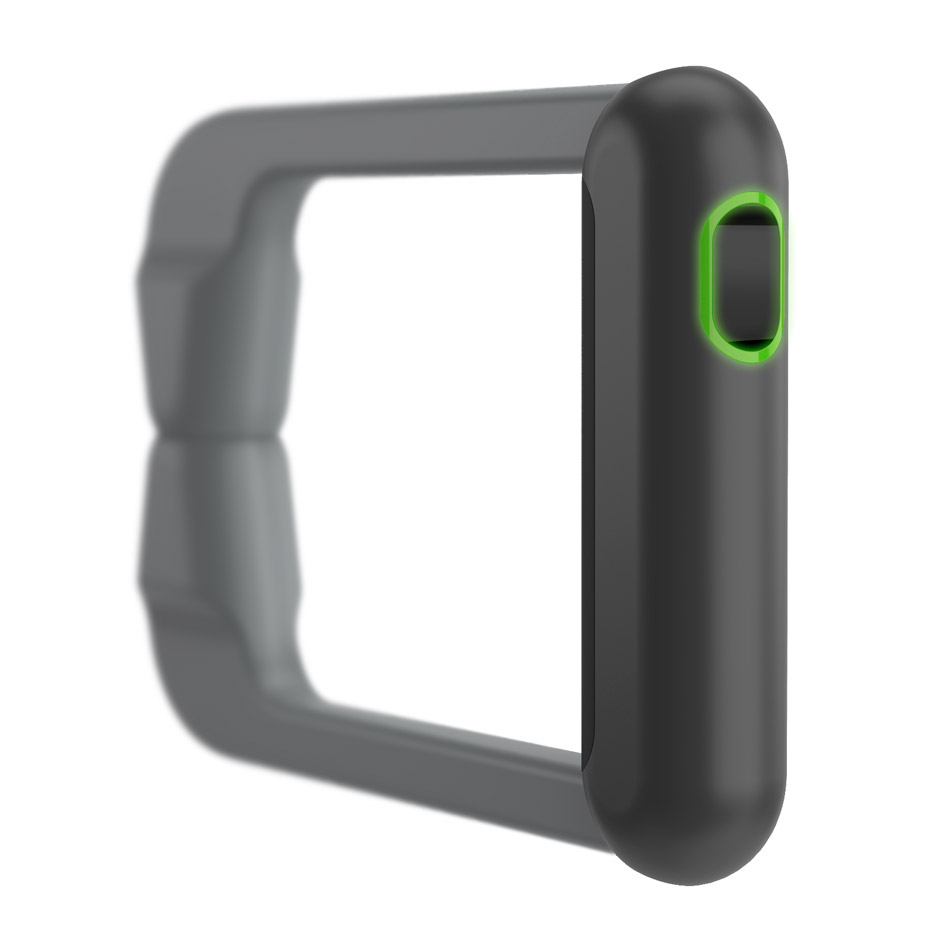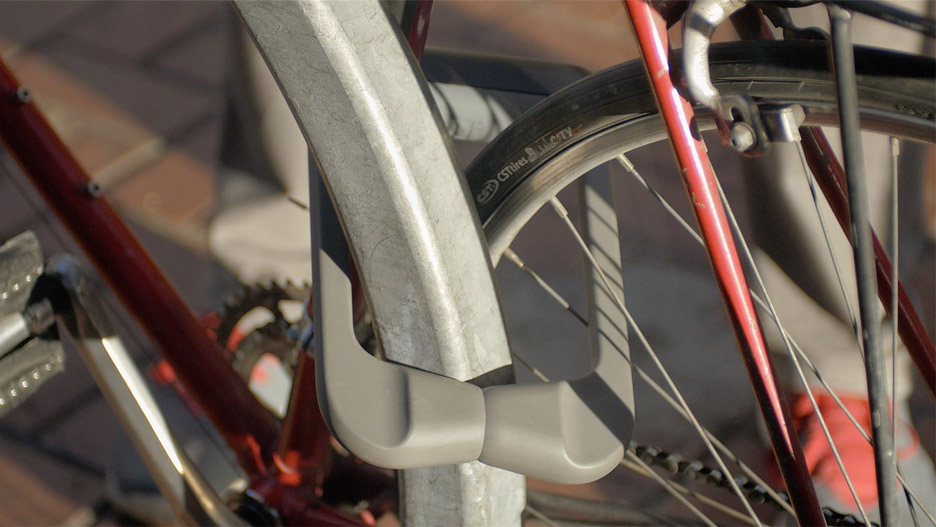Keyless Grasp bicycle lock uses fingerprint data to unlock
A biometric bike lock that opens using the owner's thumbprint has been launched on Kickstarter by a pair of Canadian engineers.

The U-shaped lock, which was unveiled today on the crowdfunding platform, has two hinged arms that separate to hook around the bike frame.
Owners record fingerprints with an accompanying Android or iOS smartphone app, which connects to the lock using Bluetooth and can store data from multiple users.

As the user grasps the end of the lock an optical-based sensor takes an image of the thumbprint that is used to verify their identity. An oval LED turns green and the arms are released. Unsuccessful attempts will make the LED go red.
"It was really important to have it curve into the locking point so that the push and pull idea was conveyed," said co-founder Sarb Singh, who first explored the idea with Samson Berhane while studying mechatronics engineering at the University of Waterloo in Canada.

"The placement of the fingerprint sensor and the feel of the base was really about making it easy to grip and intuitively guide your thumb into the right place," he added.
The lock is constructed from hardened steel alloy, and is powered by AAA batteries. It has a reported battery life of a year, although the company assures that the lock will still protect the bike without power.

"The whole idea behind the lock started with us wanting a way to secure our bikes without any keys and without much effort," said Singh.
"Over a period of three months we brainstormed and experimented with various designs, and once we settled on one, physically building a proof of concept and iterating it all the way to a consumer ready product that met security requirements was a huge challenge, especially when you are constrained to achieving it within a certain price range," he added.

The Grasp lock is just one of a spate of new smart attachments for bikes, including a compass that connects to a phone's GPS to guide cyclists through the city, and a handlebar attachment that prevents theft as well as helping riders navigate.
"Apps allow for a whole new way to interact with the objects around us," commented Singh. "We can take simple objects, like a bike light, and give it much more functionality that we can easily interact with through an app. And all this without the need of buttons on the actual object."
The duo are currently seeking $75,000 (£50,000) of funding on Kickstarter to produce the device, and at the time of writing had achieved $8,000 (£5,000).